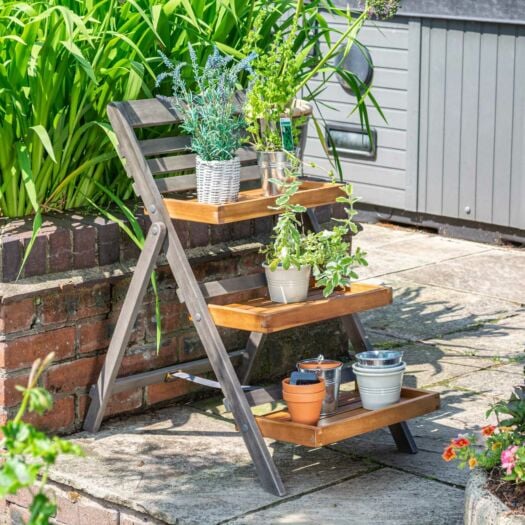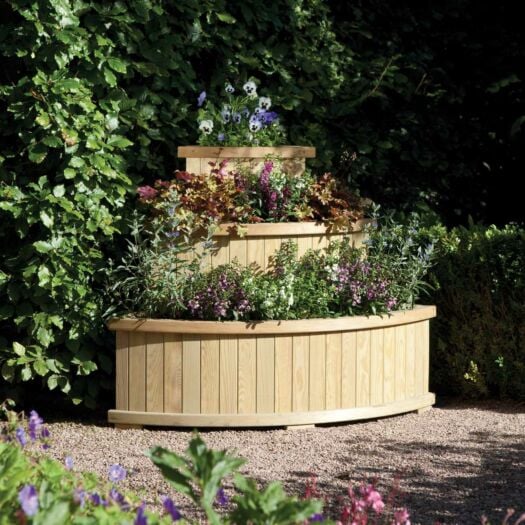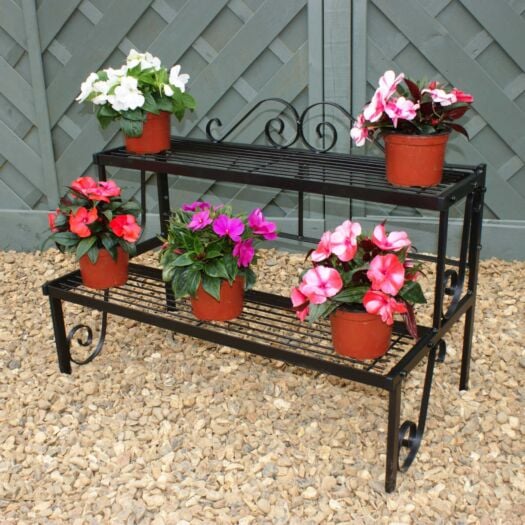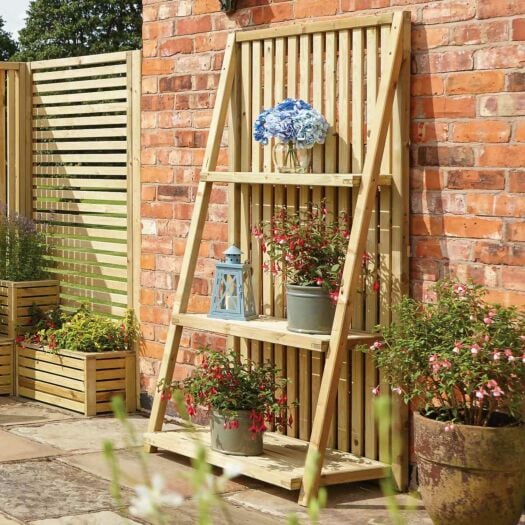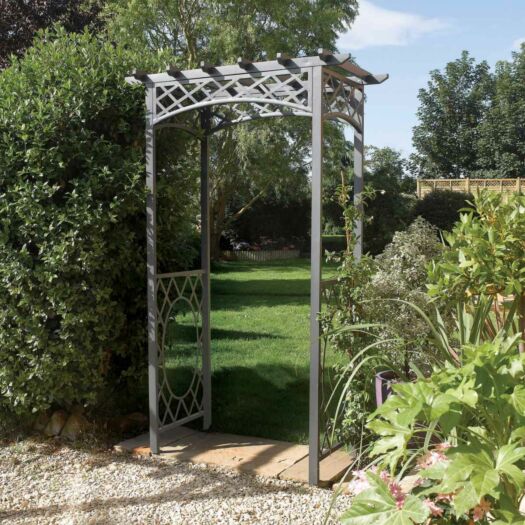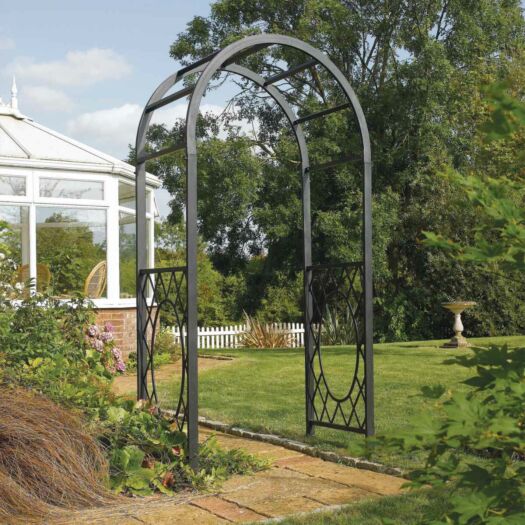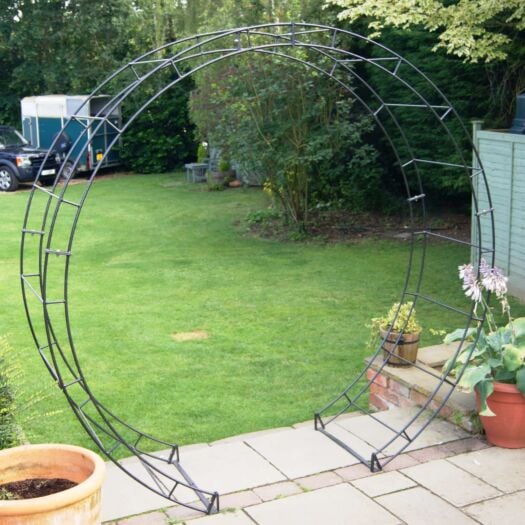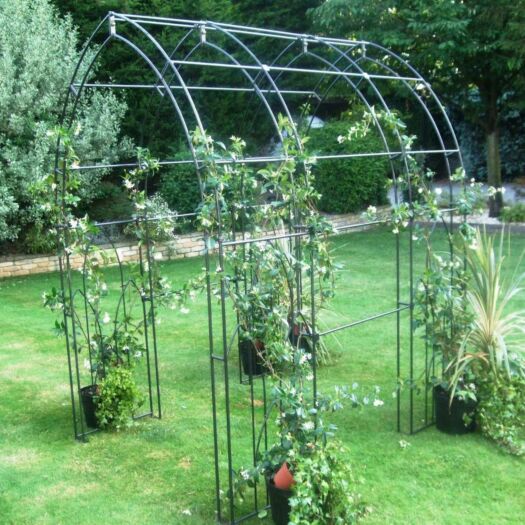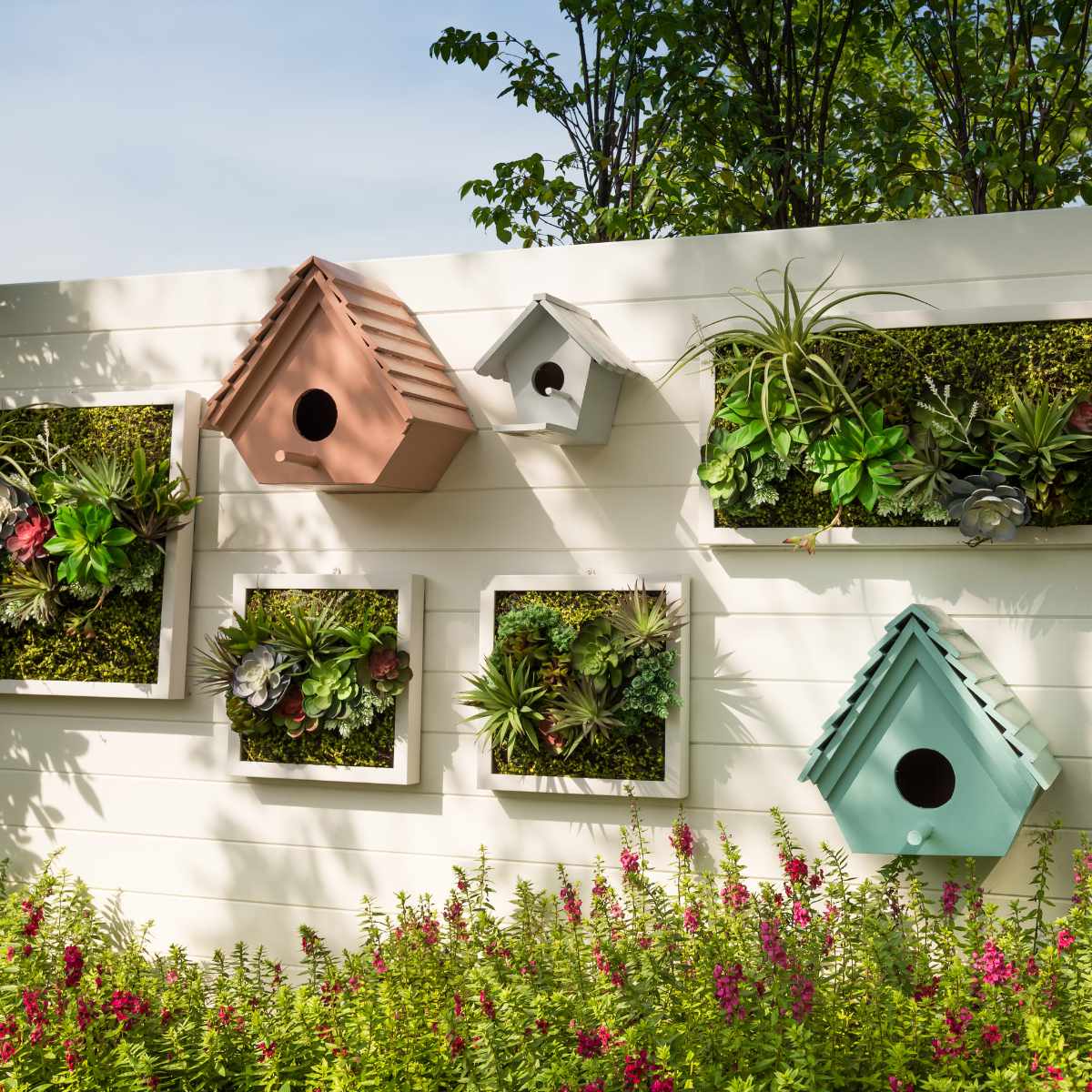
Vertical gardens have become increasingly popular as urban dwellers strive to incorporate nature into their living spaces. These innovative gardens not only maximise limited space but also bring beauty and freshness to any environment. Whether you have a small balcony, a garden fence, or even an indoor wall, a vertical garden can transform your space into a vibrant oasis. In this article, we will explore various creative ways to create a vertical garden that suits your style and helps you make the most of your available space.
Vertical Garden Ideas
1. Using Shelf Structures to Cover a Wall or Fence:One of the simplest and most effective ways to create a vertical garden is by utilising shelf structures. This method allows you to cover a wall or fence with an array of plants, providing an eye-catching and green backdrop. Start by installing sturdy shelves horizontally along the desired area. Opt for weather-resistant materials such as treated wood or metal. Place potted plants or planter boxes on the shelves, ensuring proper drainage. Mix and match plants of various colours, textures, and sizes to create a visually appealing display. Pain your pots in a colour to suit your garden design style. |
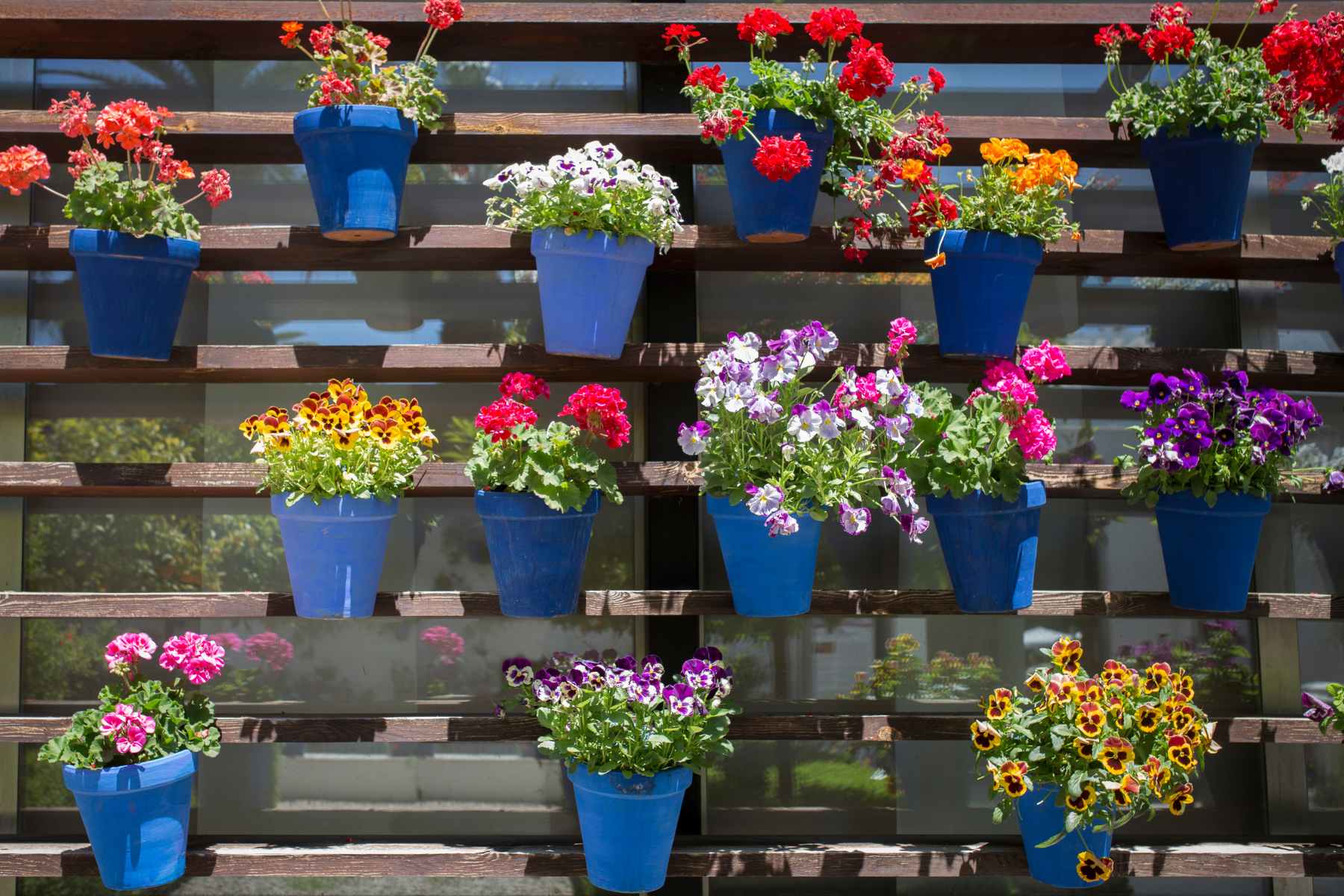 |
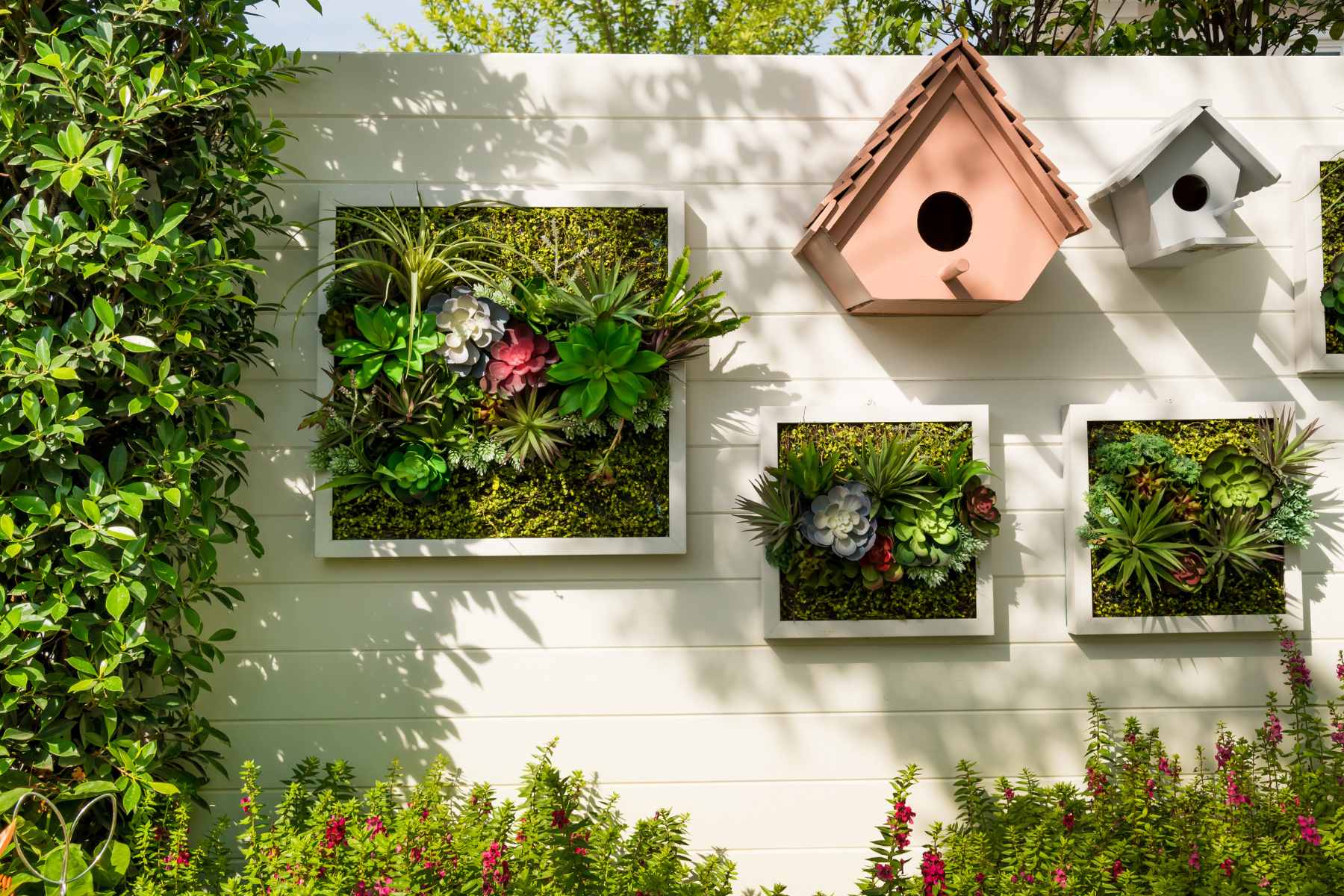 |
2. Picture Frame Styles:Another aesthetically pleasing approach to vertical gardening is by using picture frame-style planters. These unique structures add a touch of elegance to any wall or outdoor space. To create a picture frame planter, construct a wooden frame with a backing, leaving the front open. Attach a wire mesh or a landscaping fabric to hold the soil in place. Fill the frame with a well-draining potting mix, and carefully plant your desired greenery. Succulents, ferns, and trailing vines work wonderfully in these frames, providing a lush and picturesque arrangement. |
3. Reusing and Recycling - Guttering, Pallets, and Tyres:Vertical gardening is not only an opportunity to bring nature to your surroundings but also a chance to repurpose and recycle materials. Guttering, pallets, and tyres are excellent options for creating eco-friendly vertical gardens. a. Guttering: Install lengths of rain guttering horizontally, securing them to a wall or fence. Fill the gutters with soil and plant herbs, small flowers, or trailing plants. This method is perfect for creating an edible vertical garden or a vibrant display of colourful blooms. b. Pallets: Repurpose wooden pallets by transforming them into vertical garden masterpieces. Attach planters or pots to the slats, ensuring proper drainage. Lean the pallet against a wall or fence, or mount it securely. Fill each planter with soil and plant your favourite herbs, flowers, or even vegetables. c. Tyres: Discarded tyres can be transformed into unique vertical garden features. Paint the tyres in vibrant colours and stack them, securing them with bolts or wire. Fill each tyre with soil and plant a variety of cascading flowers, vines, or even small shrubs. This method not only adds a quirky touch but also helps reduce waste. |
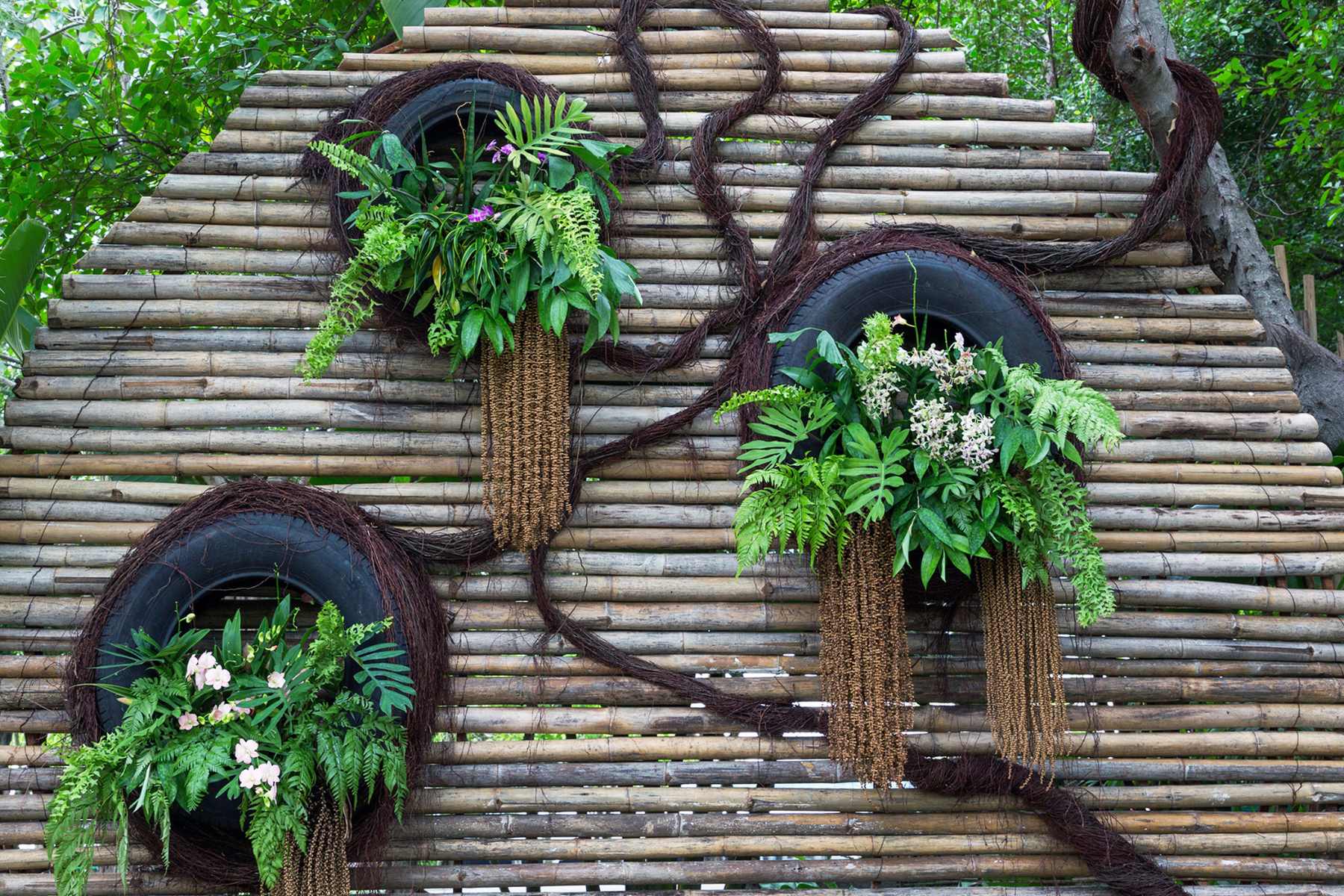 |
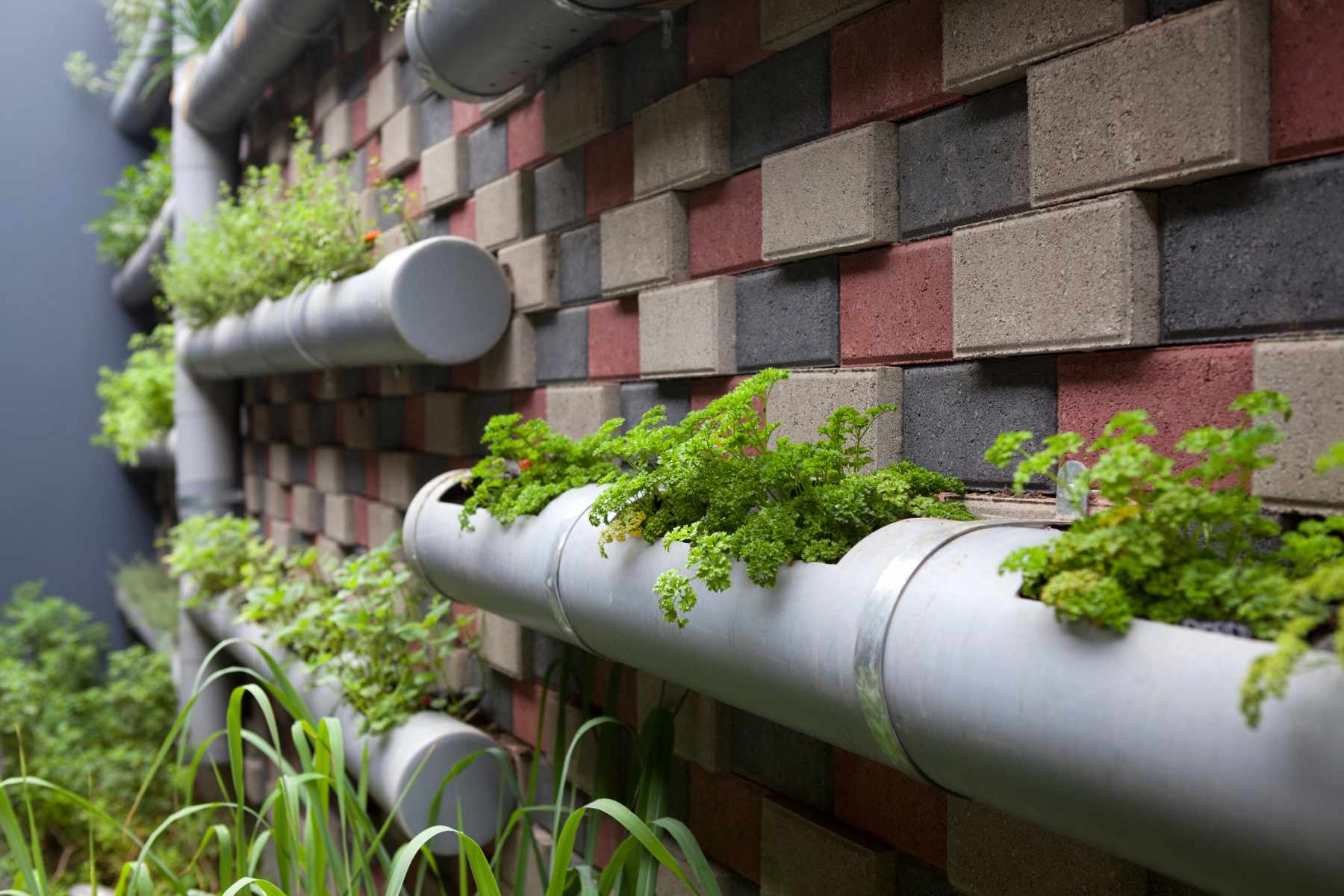 |
4. Using Pipes to Create a Herb Garden:Vertical gardening can also be practical and functional, especially when it comes to growing herbs. Utilise PVC pipes or other cylindrical containers to create a vertical herb garden. Attach the pipes securely to a wall or fence, ensuring they are at an angle to allow proper water drainage. Drill holes into the sides of the pipes, leaving enough space for each herb plant. Fill the pipes with a well-draining potting mix and plant your favourite herbs. This method not only saves space but also provides easy access to fresh herbs for cooking and garnishing. |
5. Climbing Plants within Trees, Trellises, and Arches:If you have trees, trellises, or arches in your garden, take advantage of their vertical structure by incorporating climbing plants. These plants naturally utilise vertical surfaces to grow and can add a touch of enchantment to your outdoor space. Choose climbers such as ivy, jasmine, wisteria, or climbing roses. Provide appropriate support structures like trellises or arched frames to guide the plants upwards. As they grow, the climbers will create a lush, green canopy that adds depth and beauty to your garden. |
 |
Conclusion
Vertical gardens offer a fantastic solution for bringing nature into small spaces and enhancing the beauty of larger ones. Whether you choose to use shelf structures, picture frames, repurposed materials, pipes, or climbing plants, the possibilities for creating a vertical garden are endless. Remember to consider factors like sunlight, water drainage, and plant compatibility when planning your vertical garden. With a little creativity and some green-thumb enthusiasm, you can transform any wall, fence, or outdoor space into a breathtaking oasis of natural beauty.
Do you have any more tips and advice with regards to creating a vertical garden? Share them with everyone else in the comments section below!

